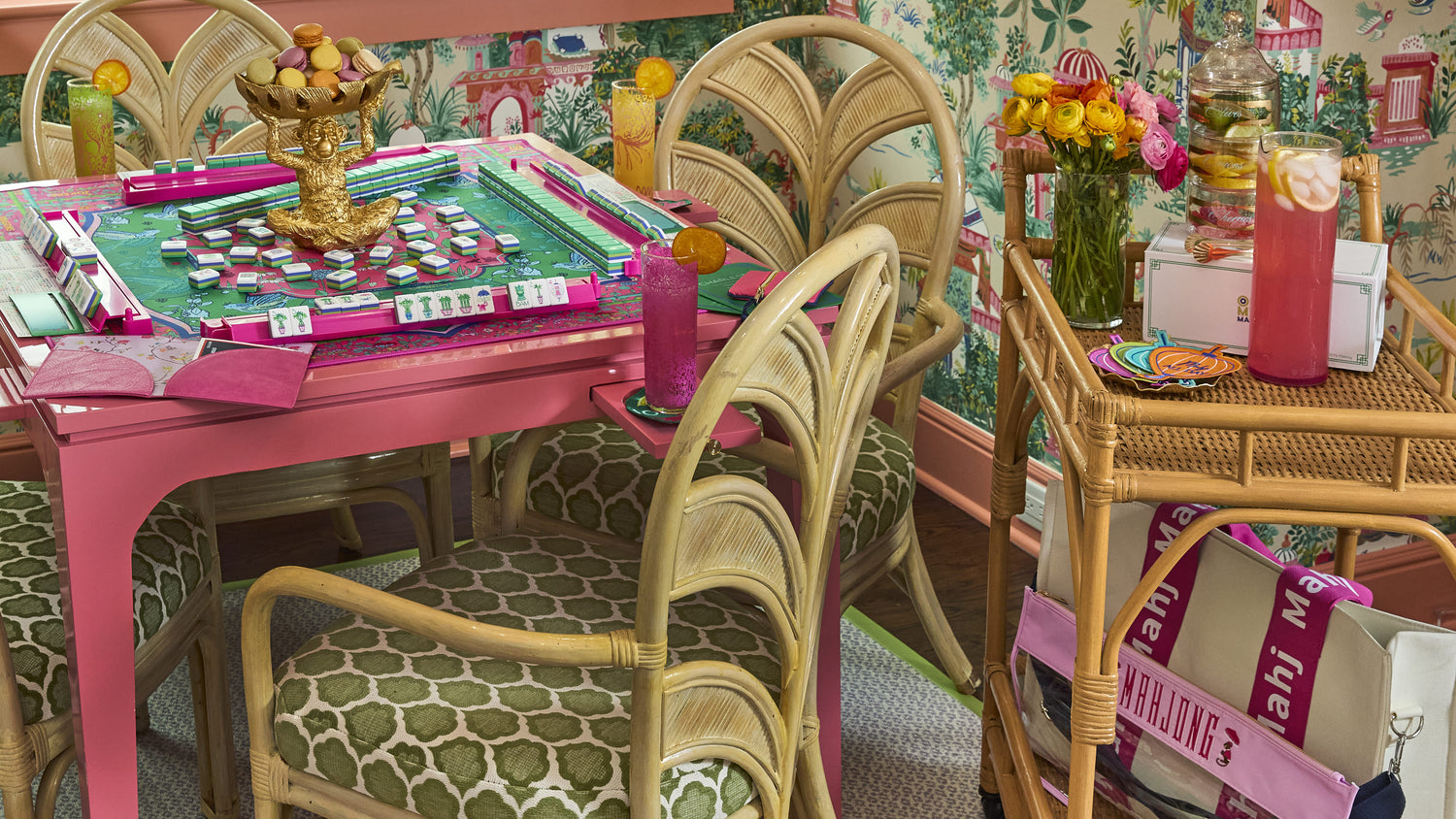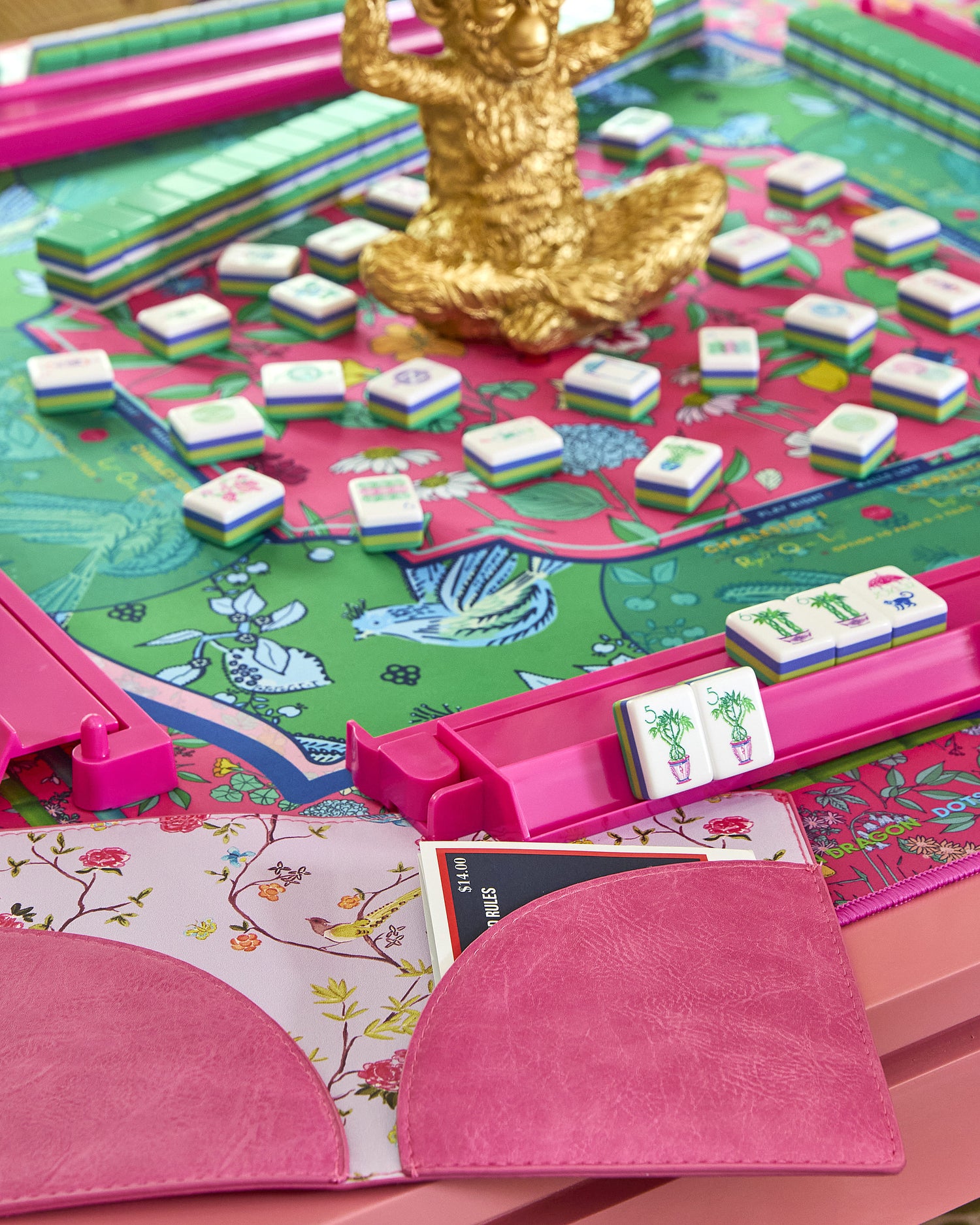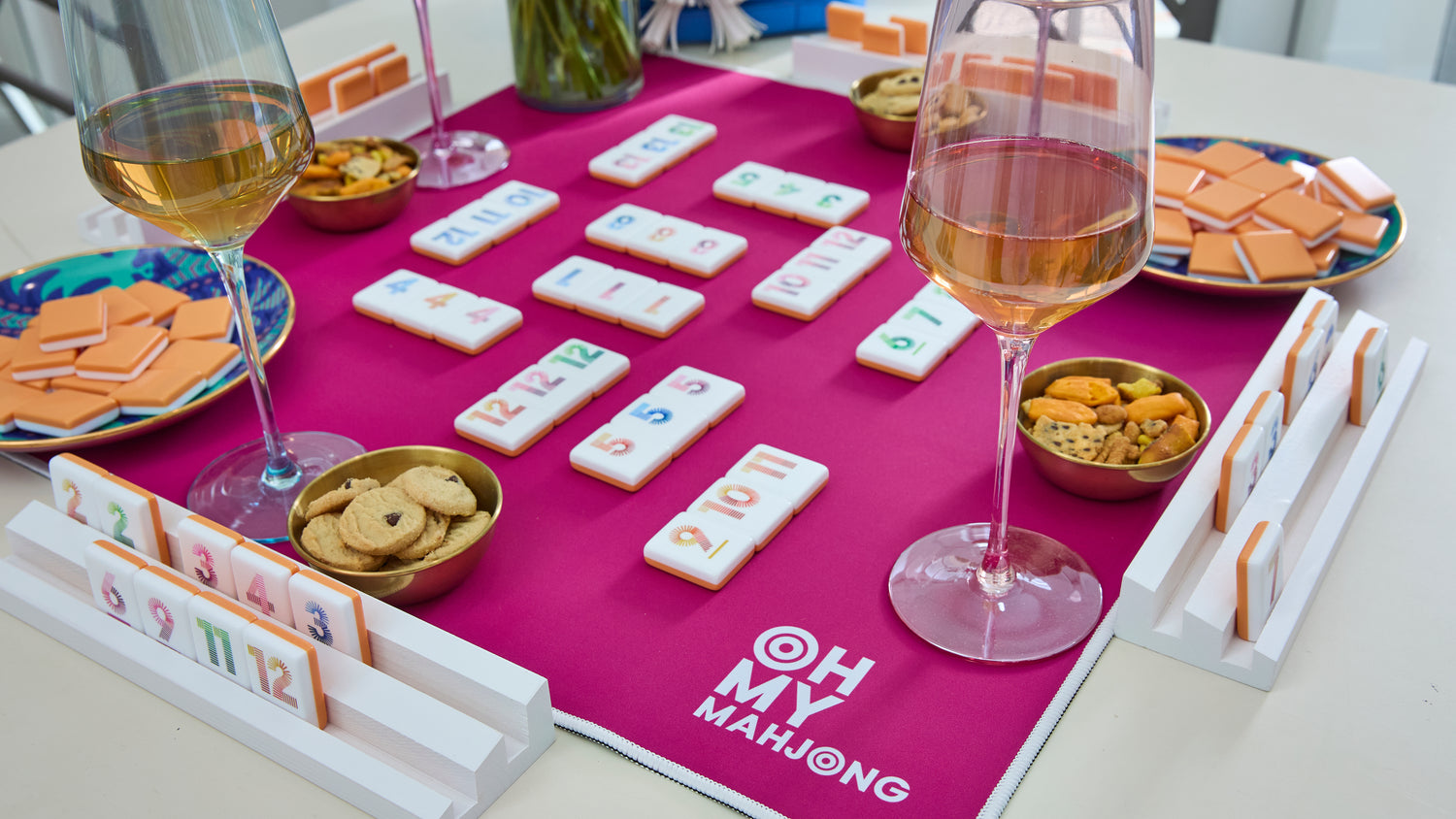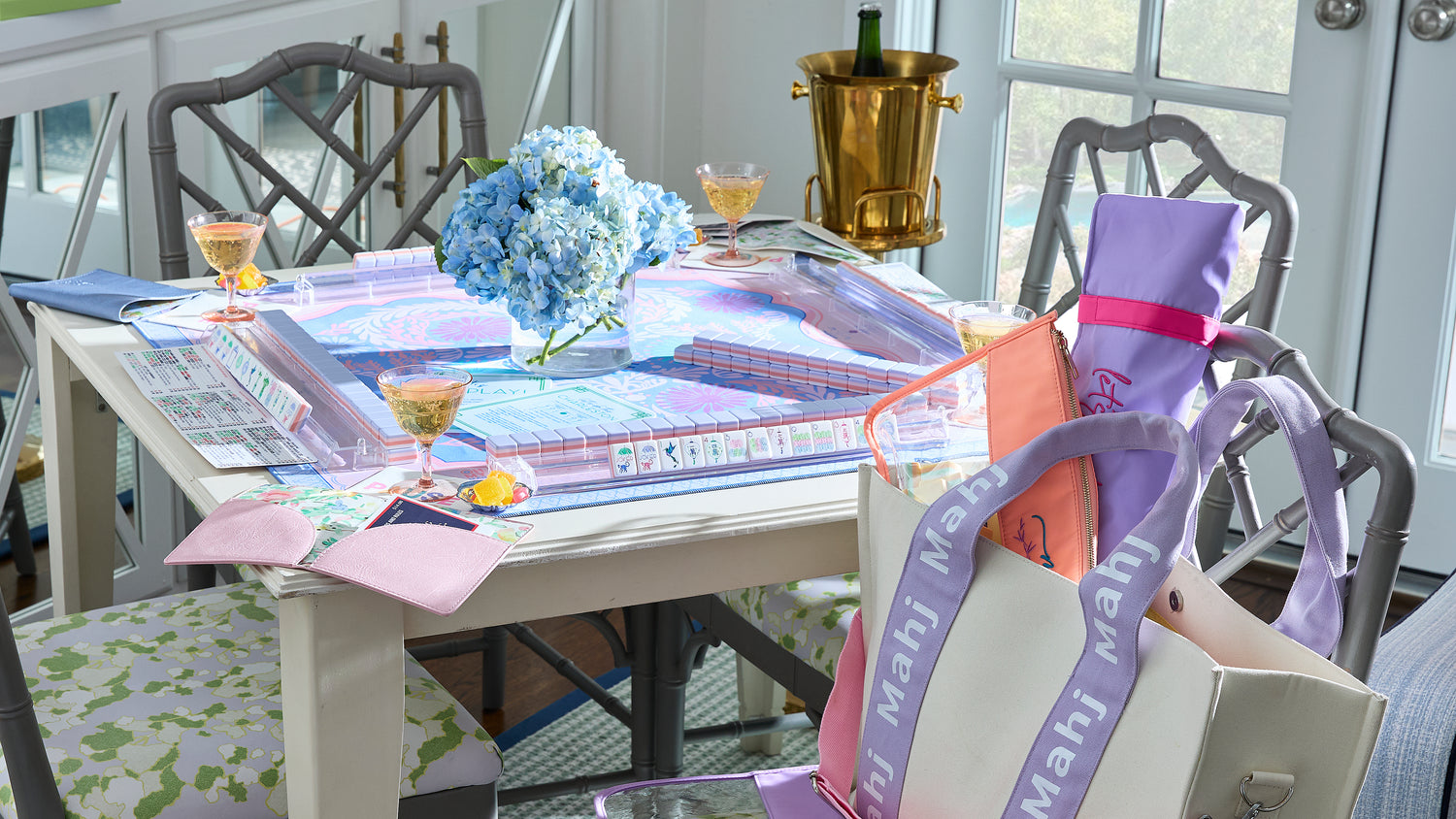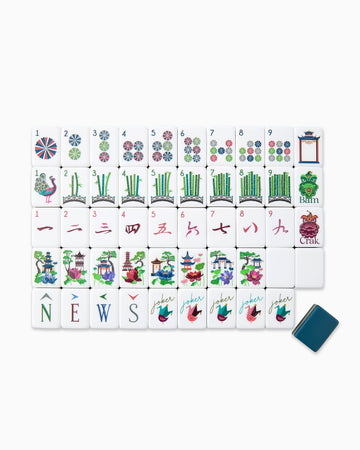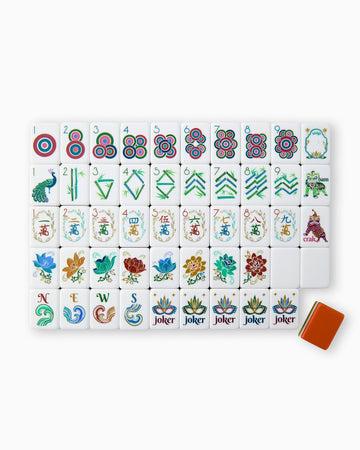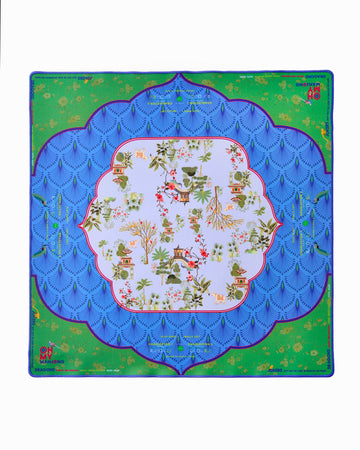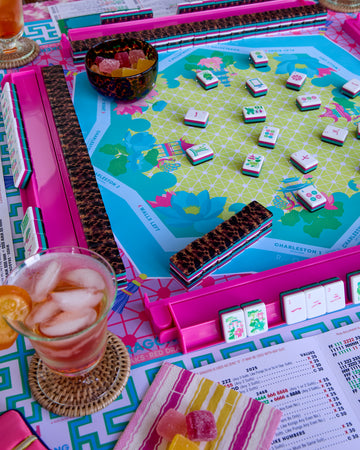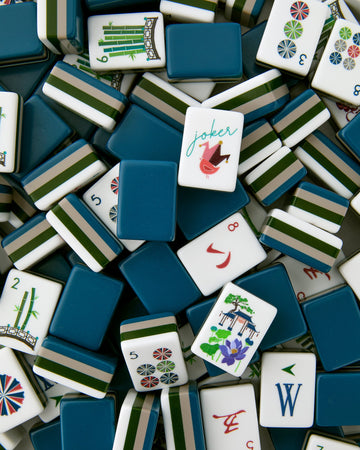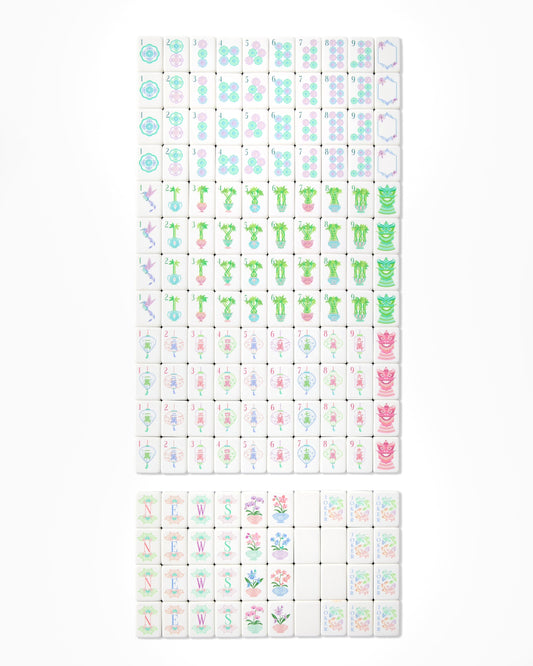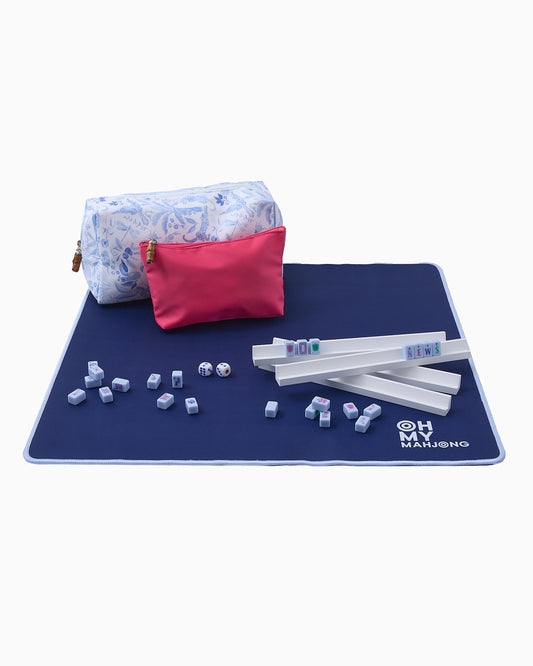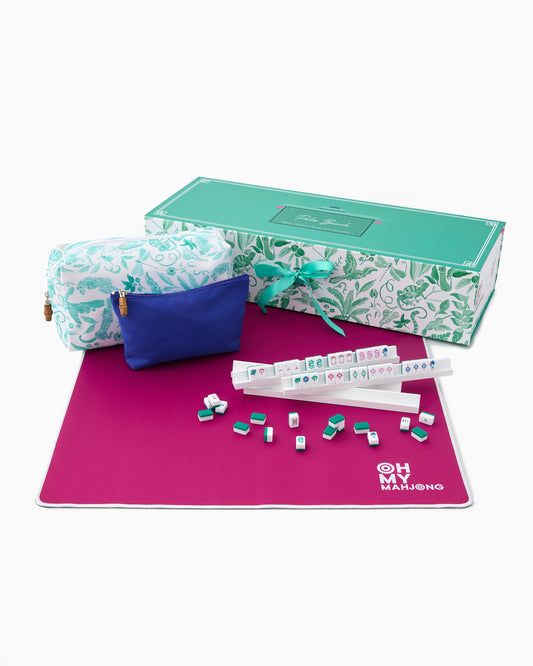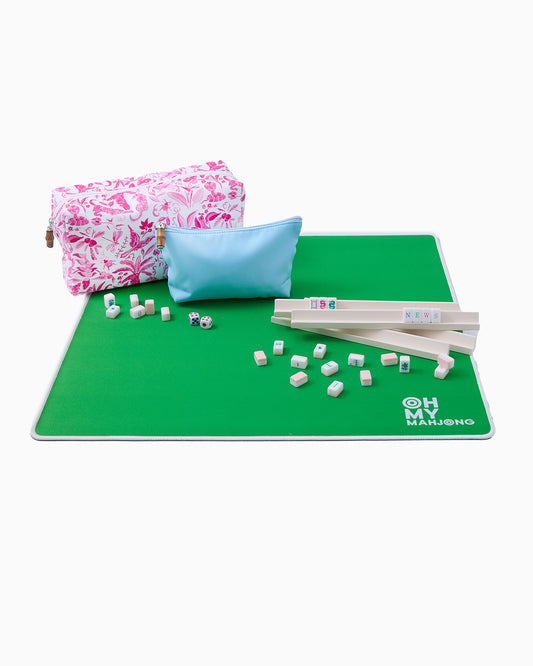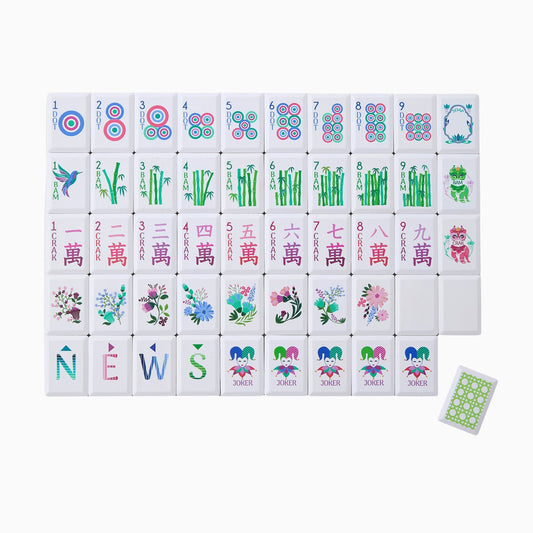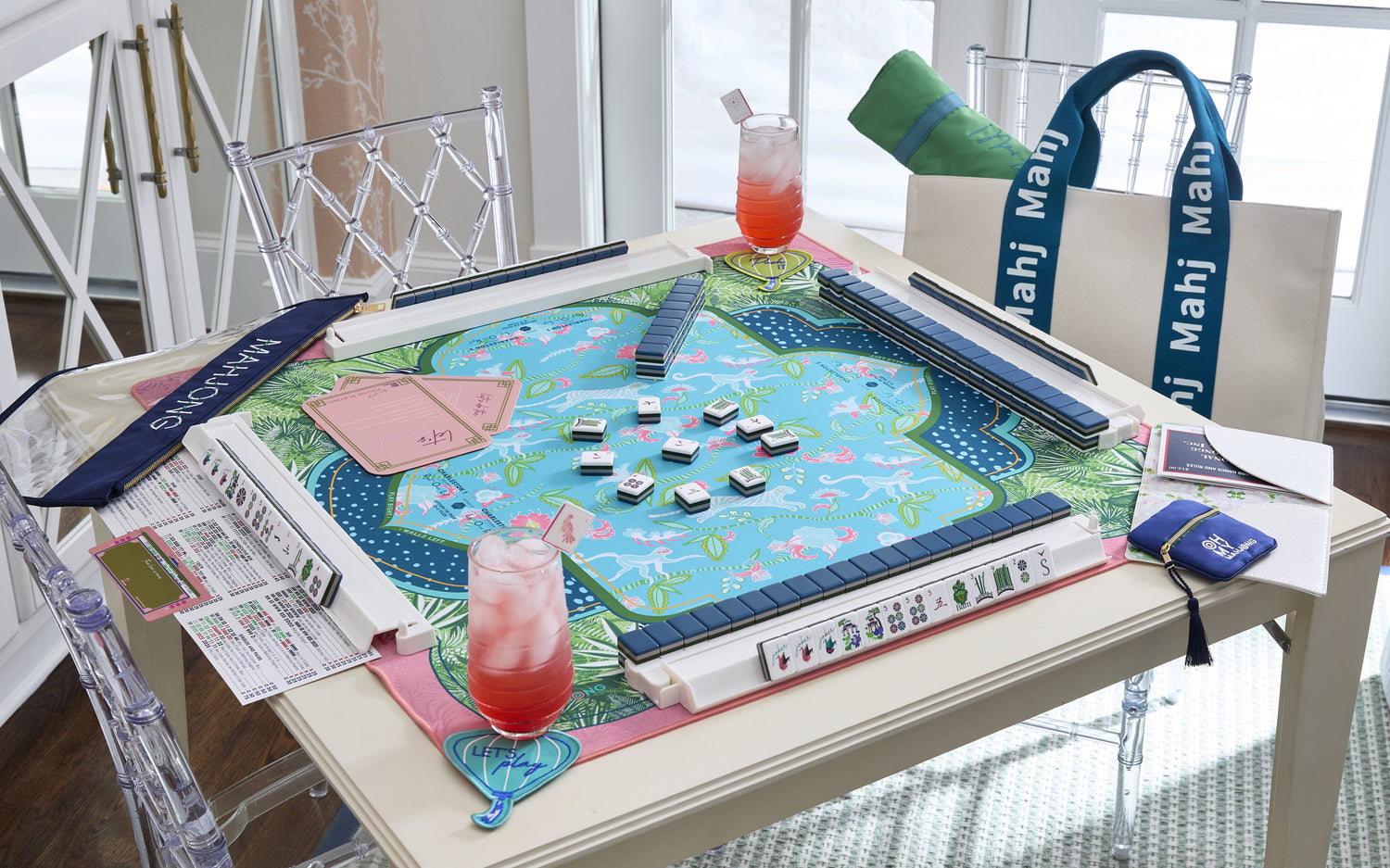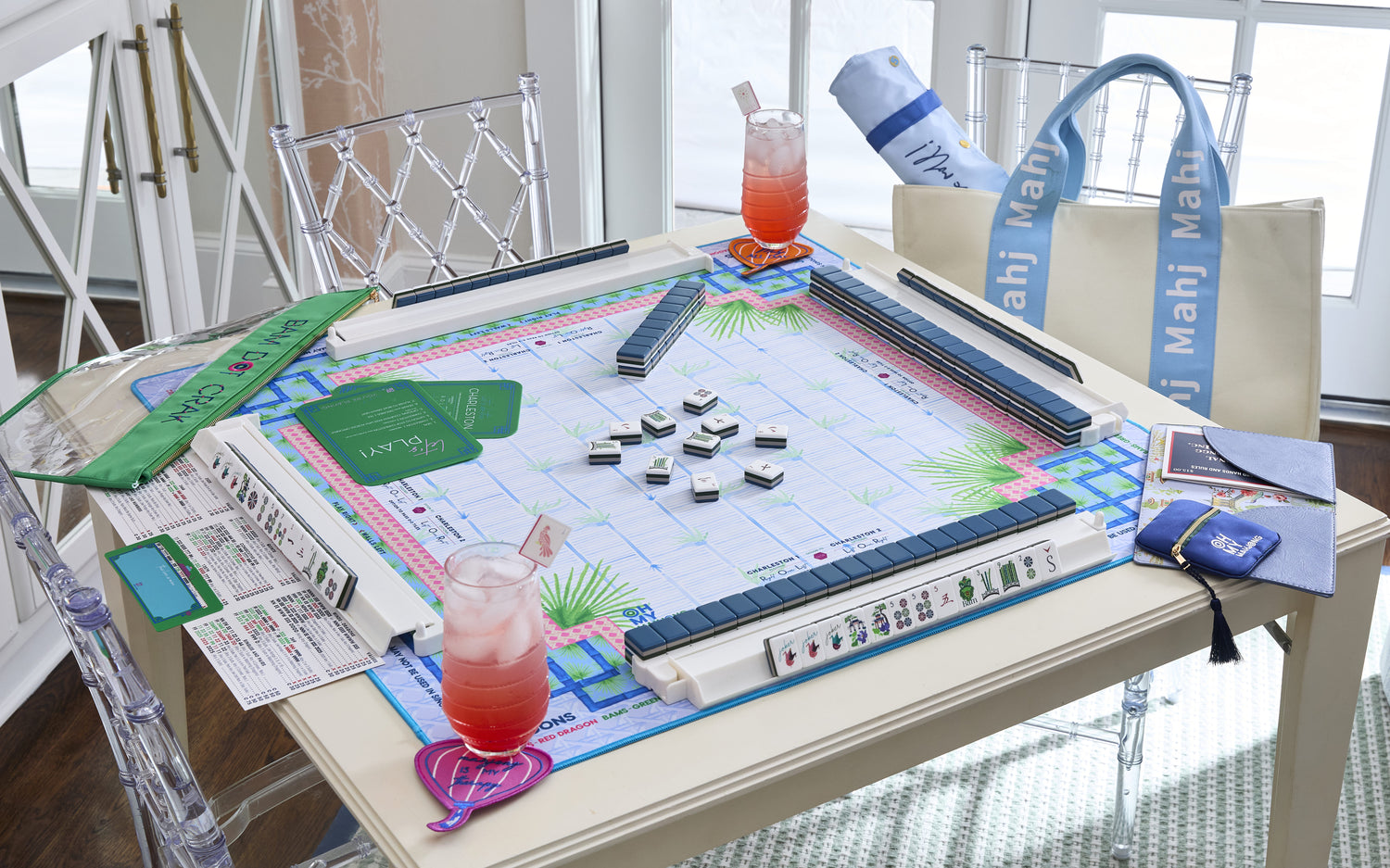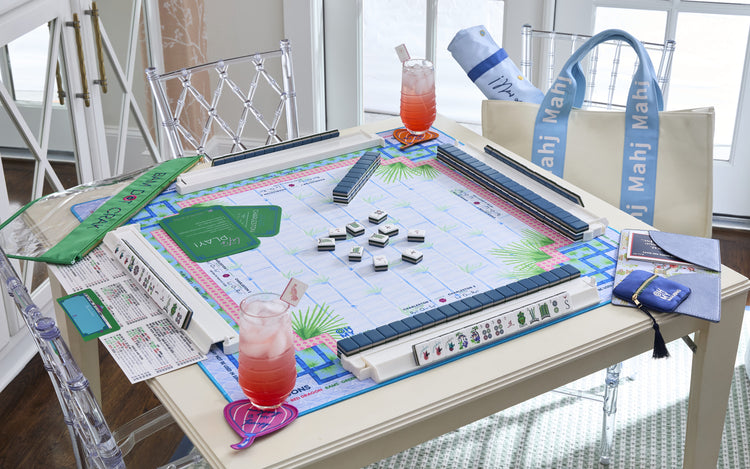

Our Latest Drop
Shop The Set
Explore Our Tile Sizes
Choose from classic Standard Tiles for traditional play or Travel Sets for easy, on-the-go fun.
Lagoon Mahjong Tiles


NEW
Lagoon Mahjong Tiles
Regular price
$400.00
Sale price
$400.00
Regular price
Moonlight Mahjong Tiles
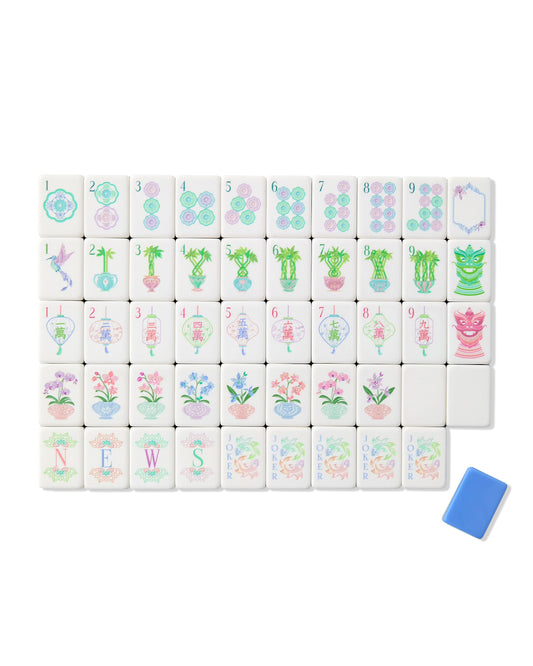

NEW
Moonlight Mahjong Tiles
Regular price
$400.00
Sale price
$400.00
Regular price
Parisian Mahjong Travel Set


Parisian Mahjong Travel Set
Regular price
$450.00
Sale price
$450.00
Regular price
Aloha Mahjong Travel Set
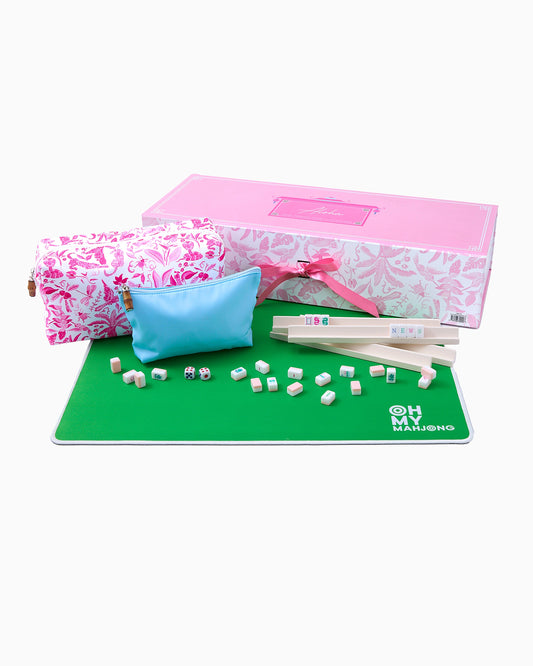

Aloha Mahjong Travel Set
Regular price
$450.00
Sale price
$450.00
Regular price
Charleston Mahjong Travel Set


Charleston Mahjong Travel Set
Regular price
$450.00
Sale price
$450.00
Regular price
Sunburst Debutante Tile Set


NEW
Sunburst Debutante Tile Set
Regular price
$325.00
Sale price
$325.00
Regular price
Poppy Debutante Tile Set


NEW
Poppy Debutante Tile Set
Regular price
$325.00
Sale price
$325.00
Regular price
Cadet Debutante Tile Set


NEW
Cadet Debutante Tile Set
Regular price
$325.00
Sale price
$325.00
Regular price
Jardin Debutante Tile Set


Jardin Debutante Tile Set
Regular price
$325.00
Sale price
$325.00
Regular price
Style your Mahjong Table Two Ways
Switch out the mat to effortlessly transform your Mahjong table! Go from a festive holiday look to a chic everyday style in seconds. One set, endless possibilities!

